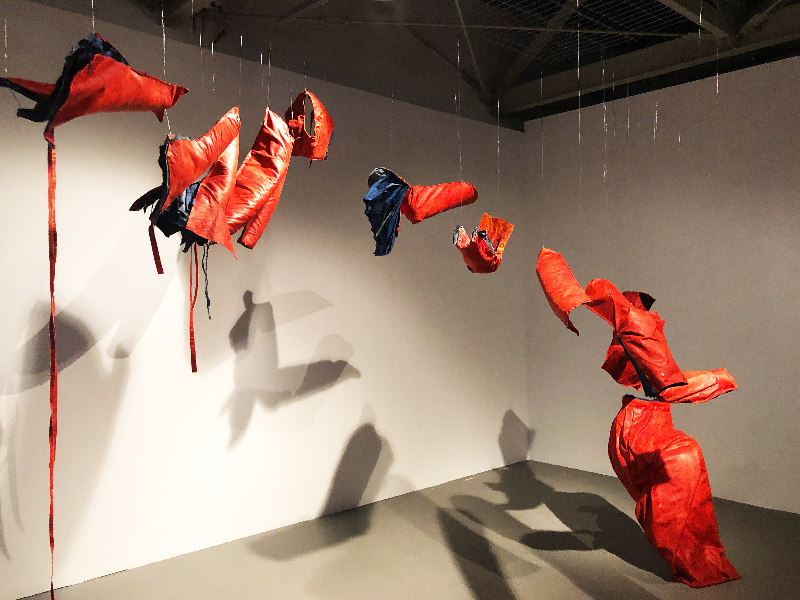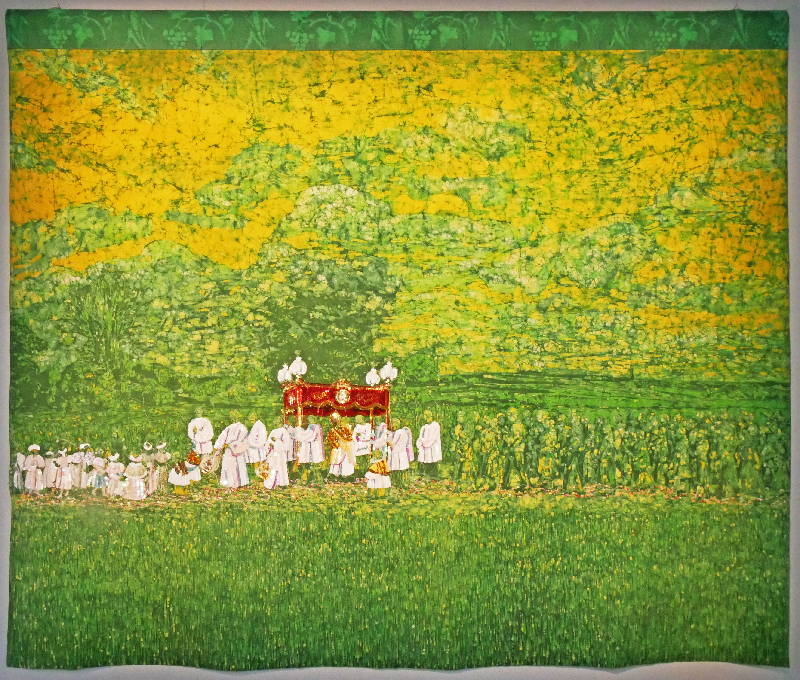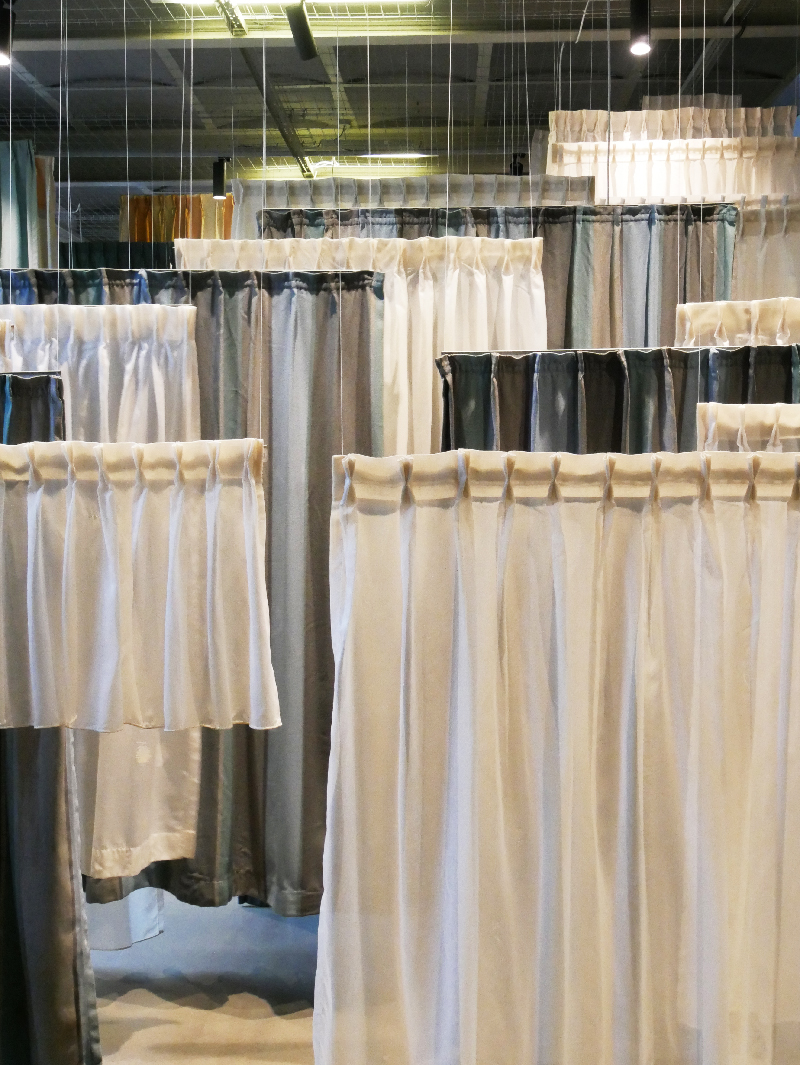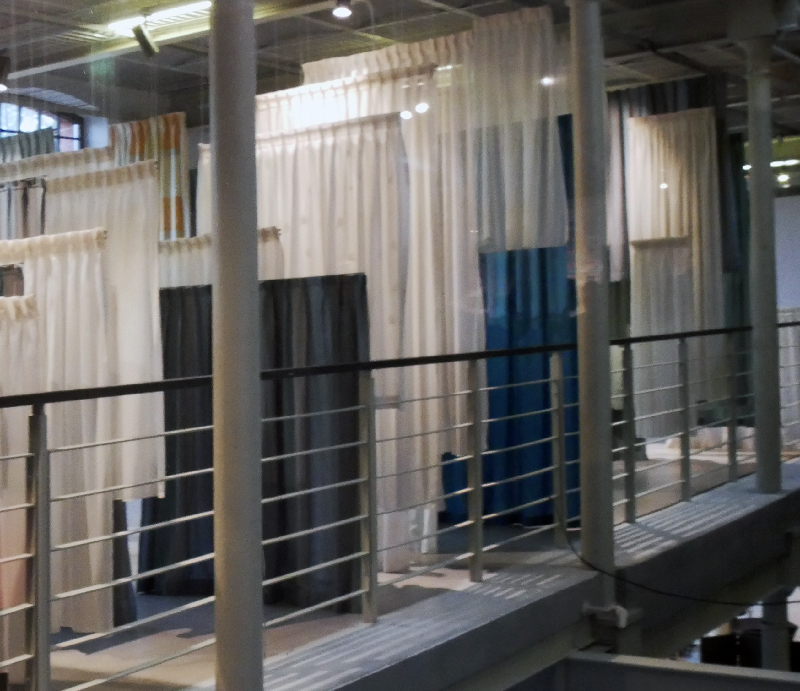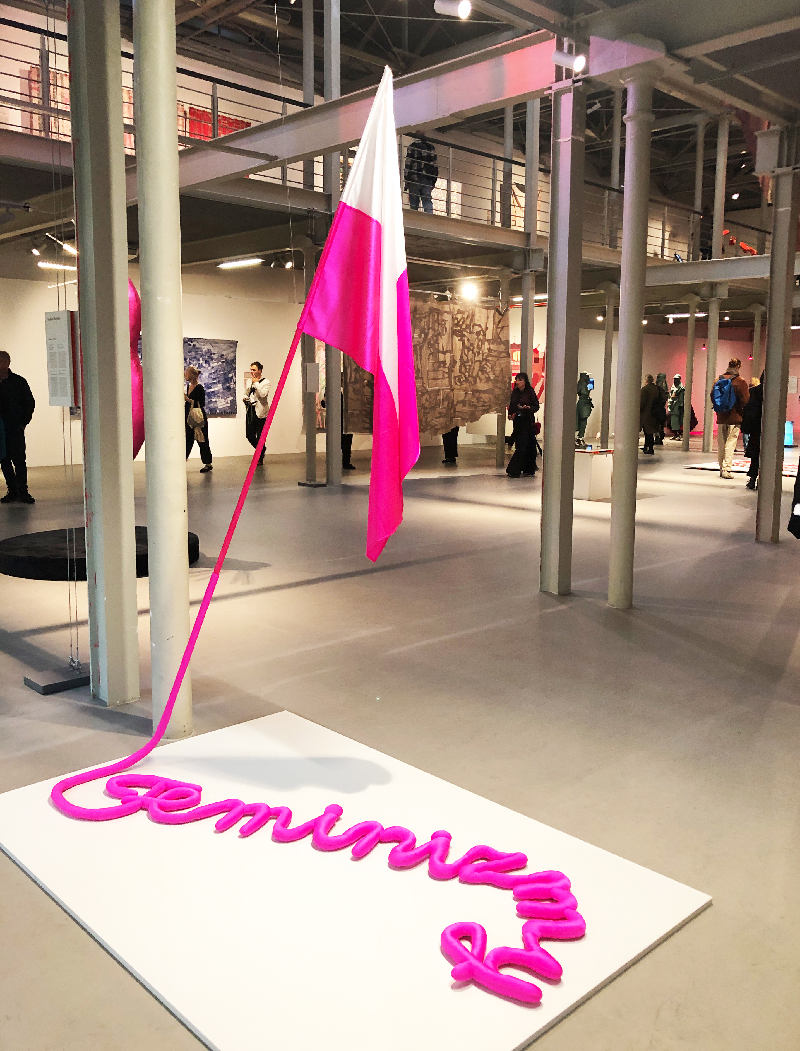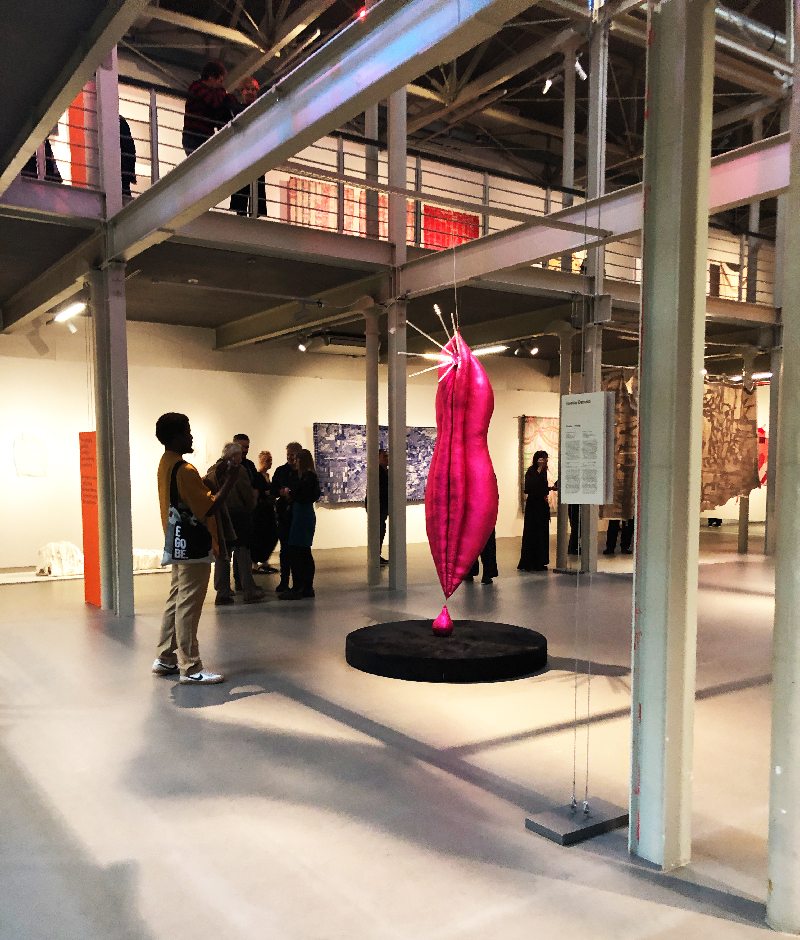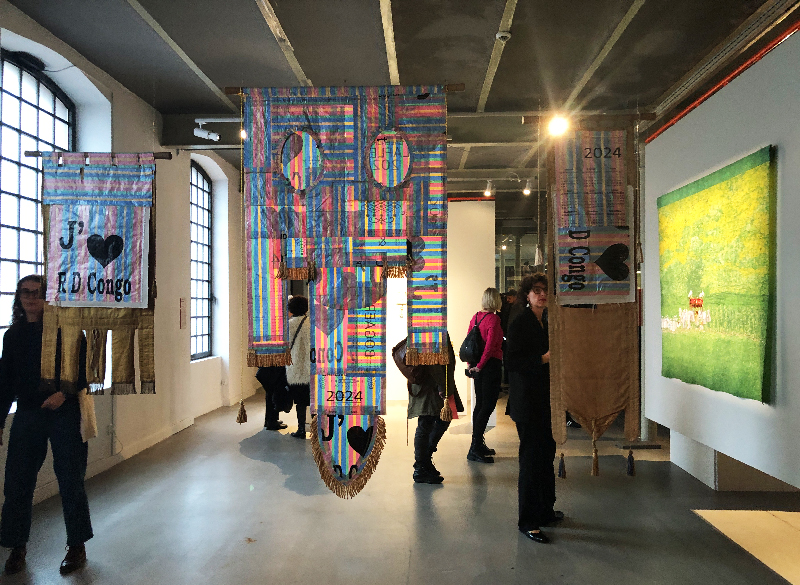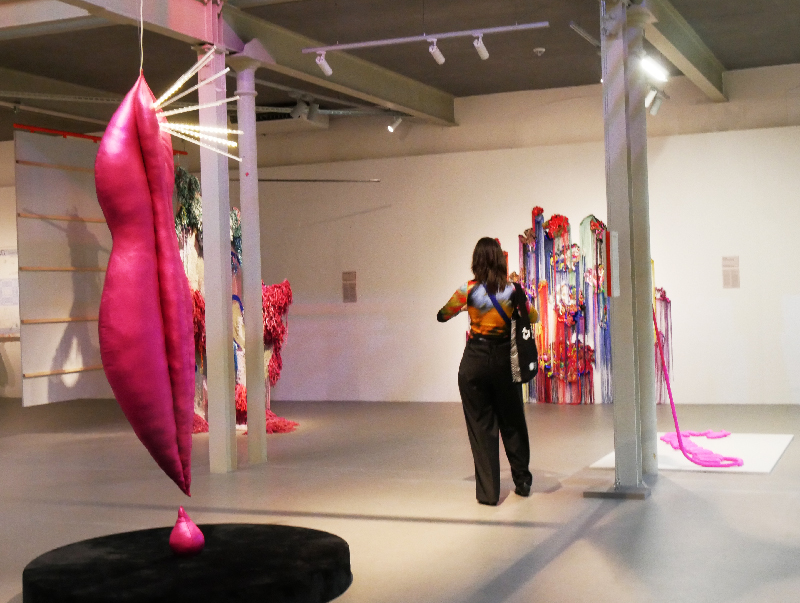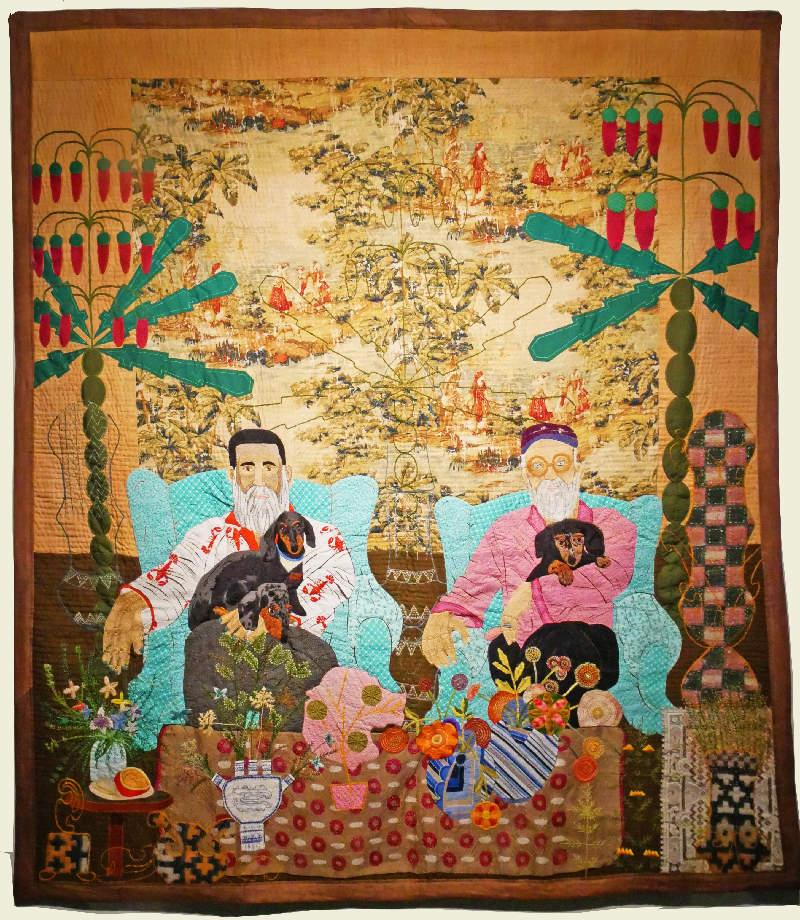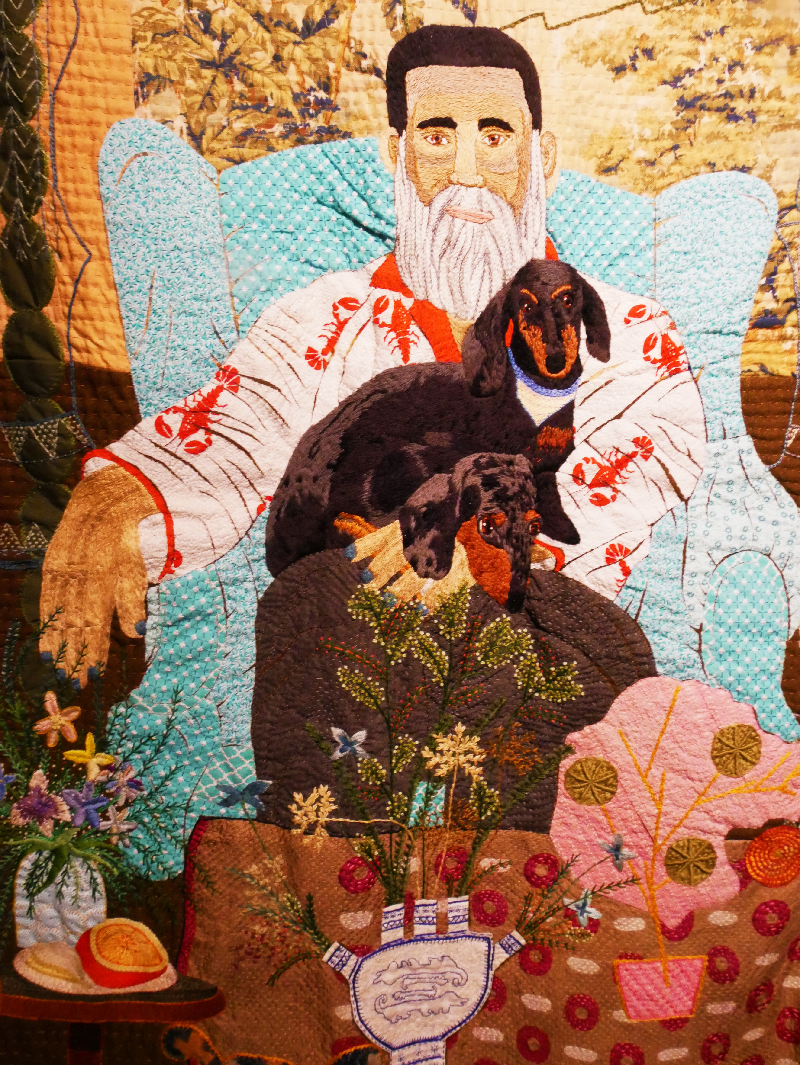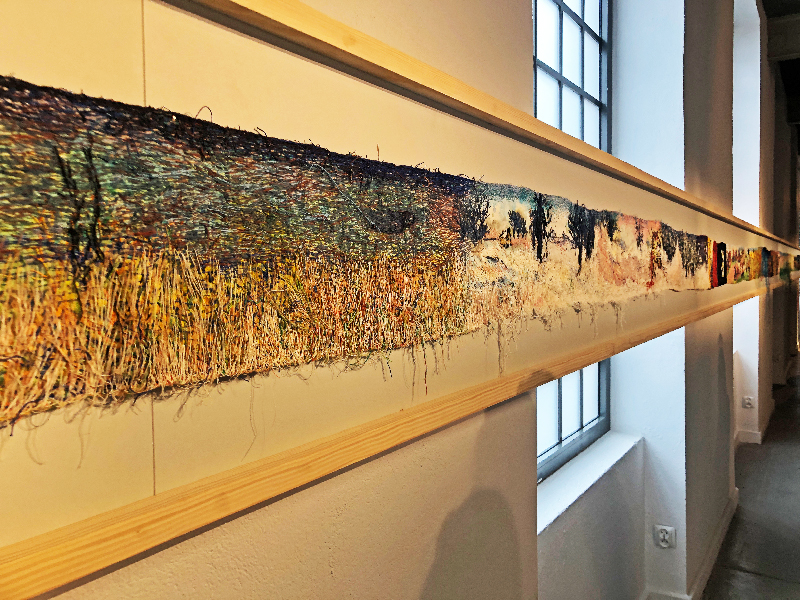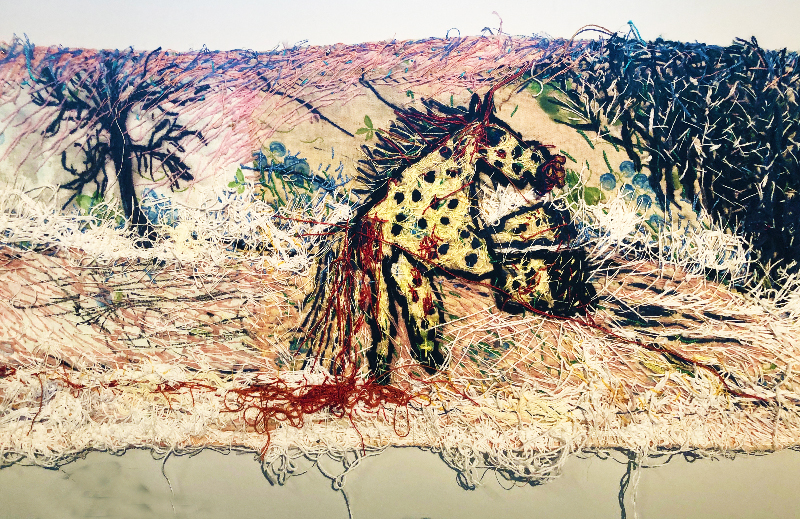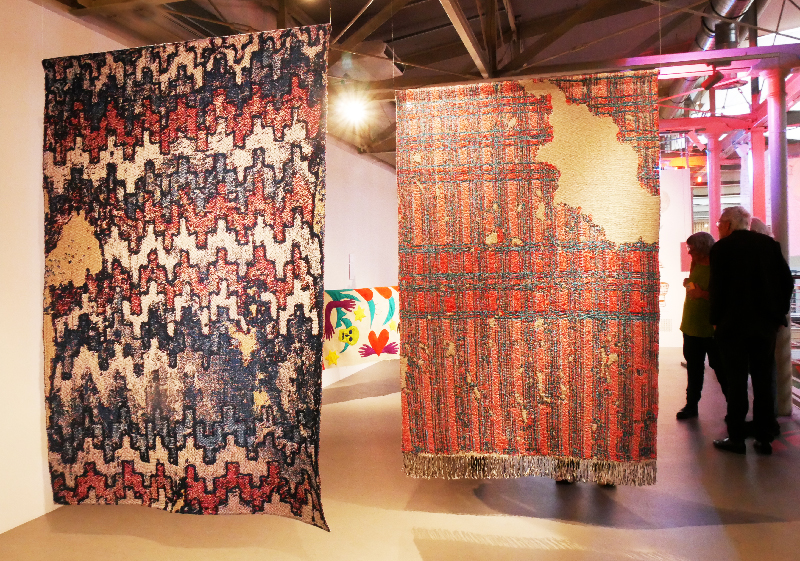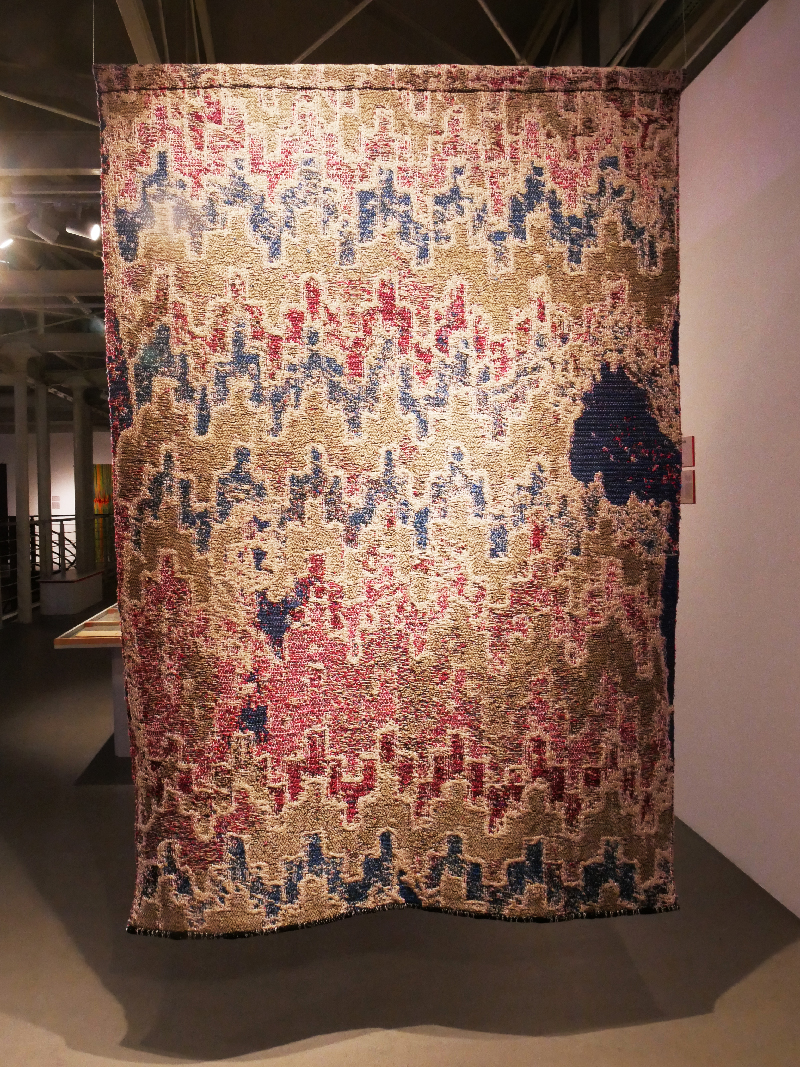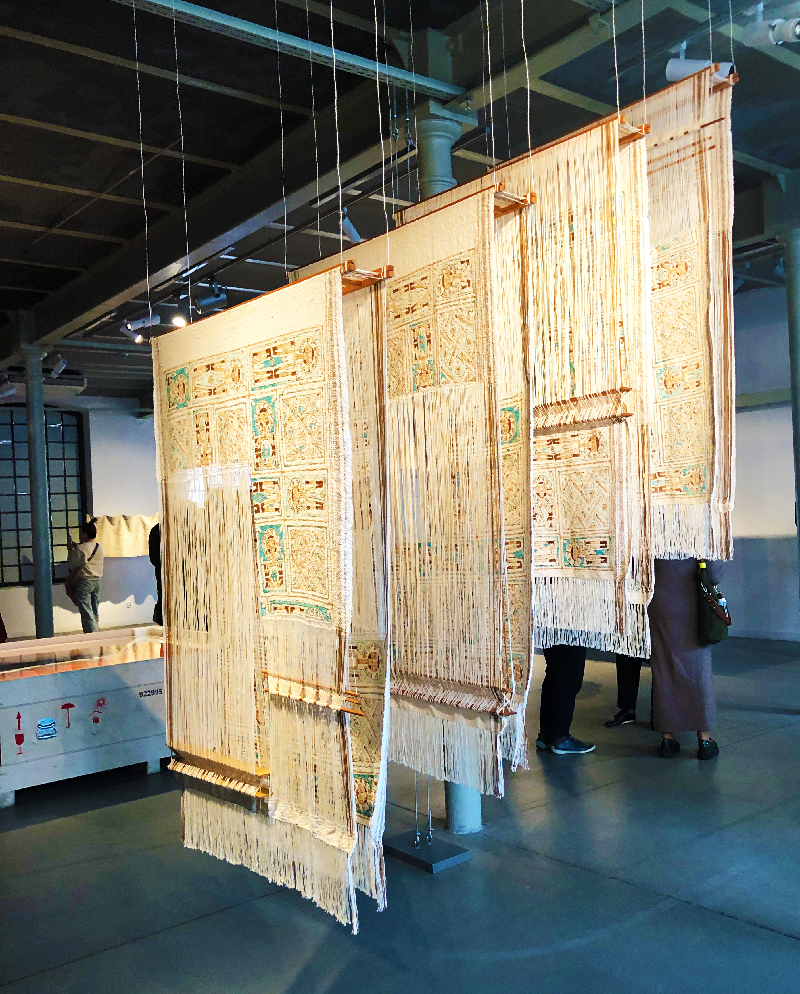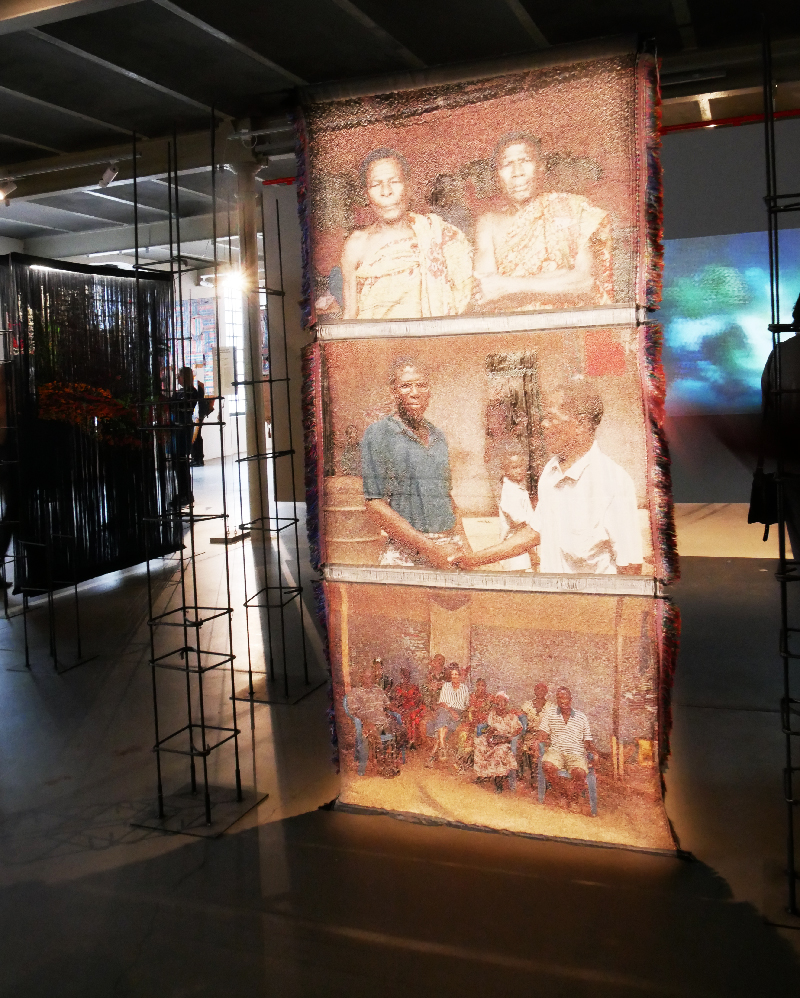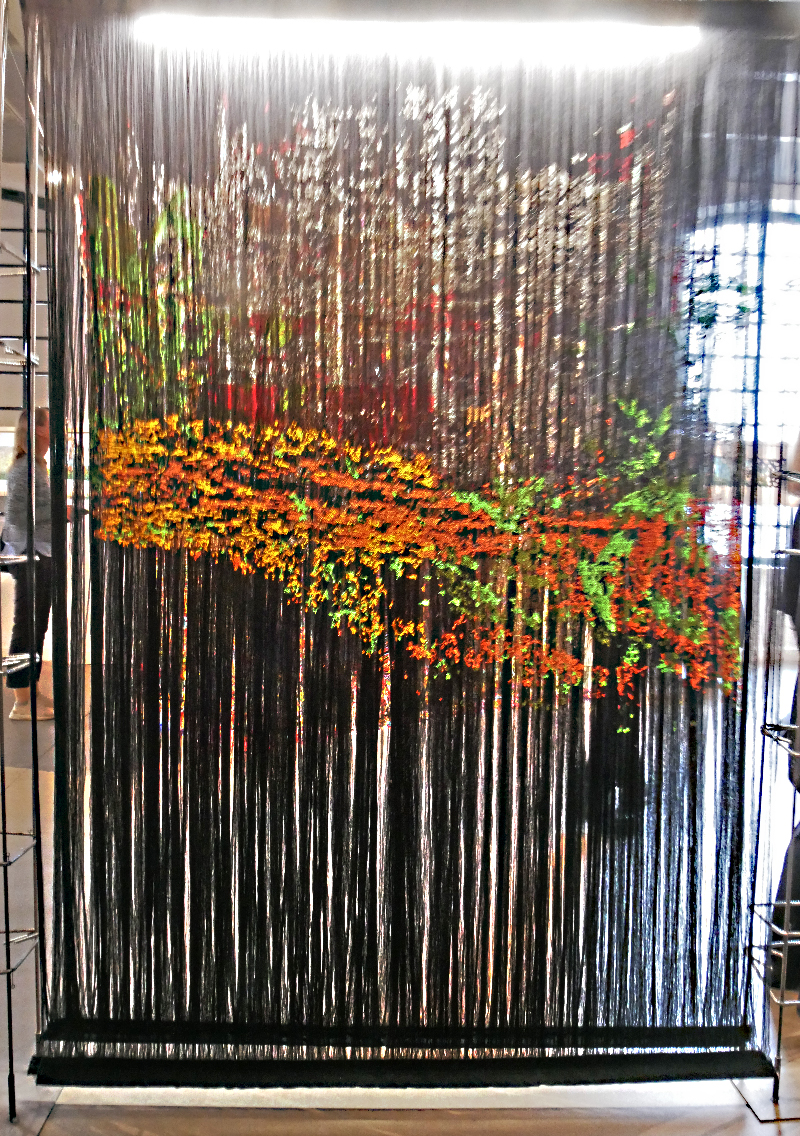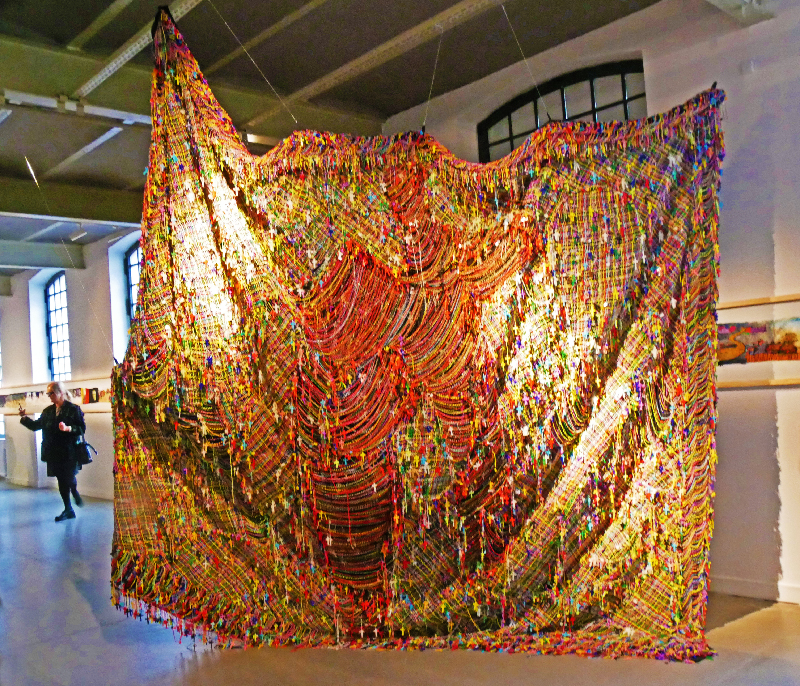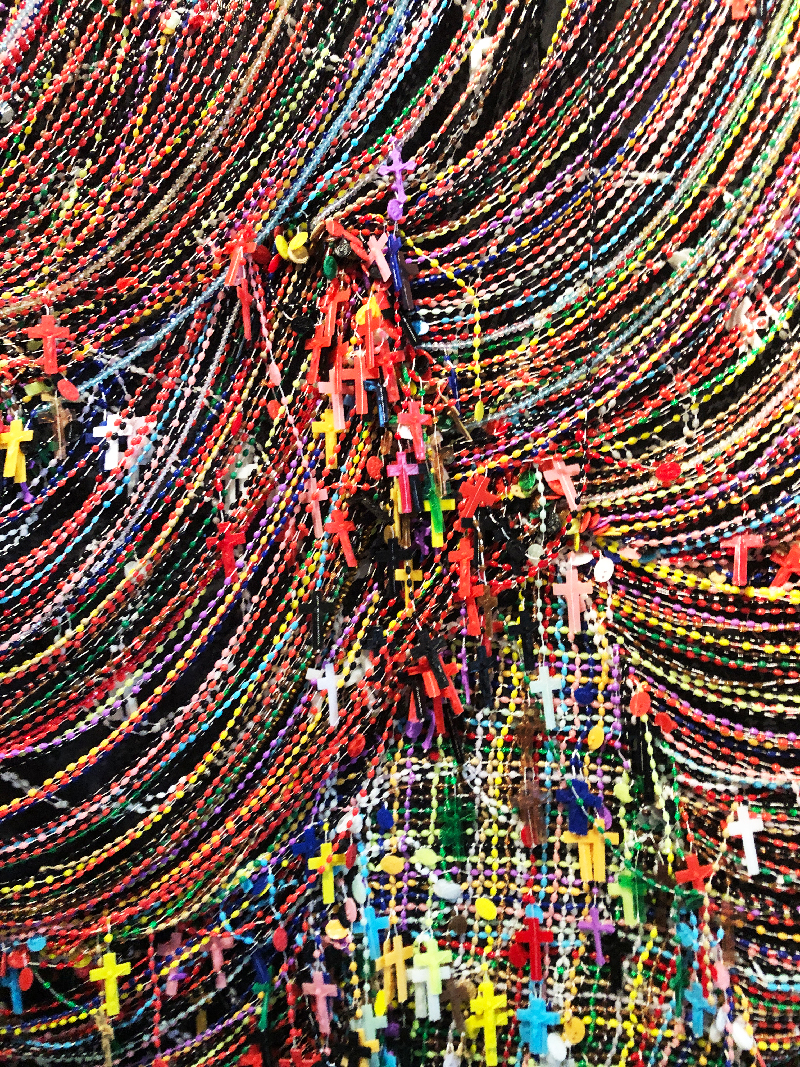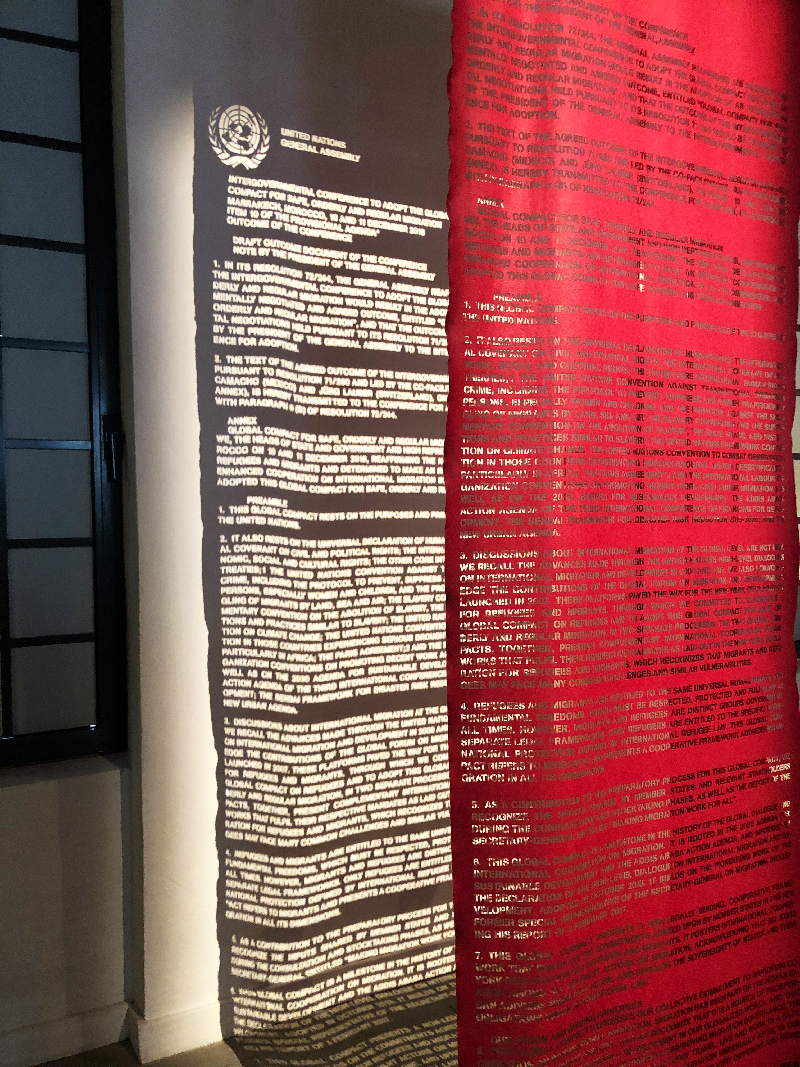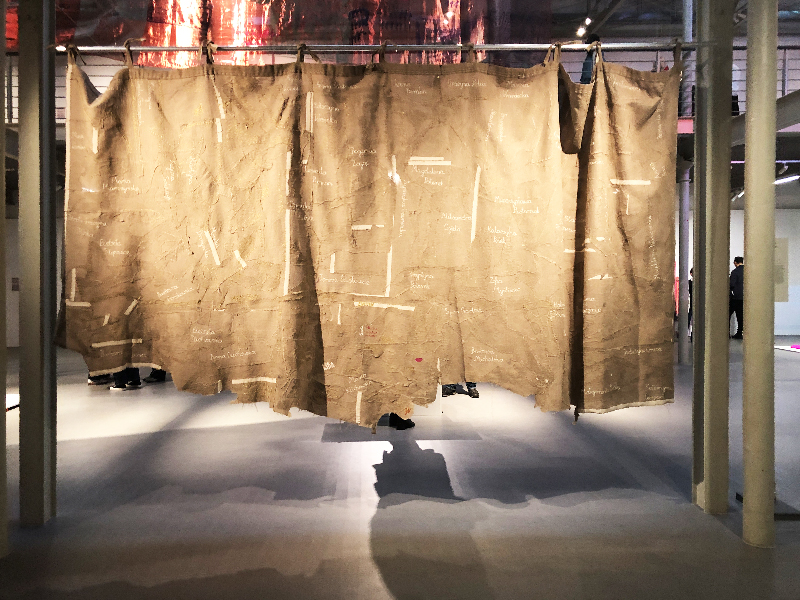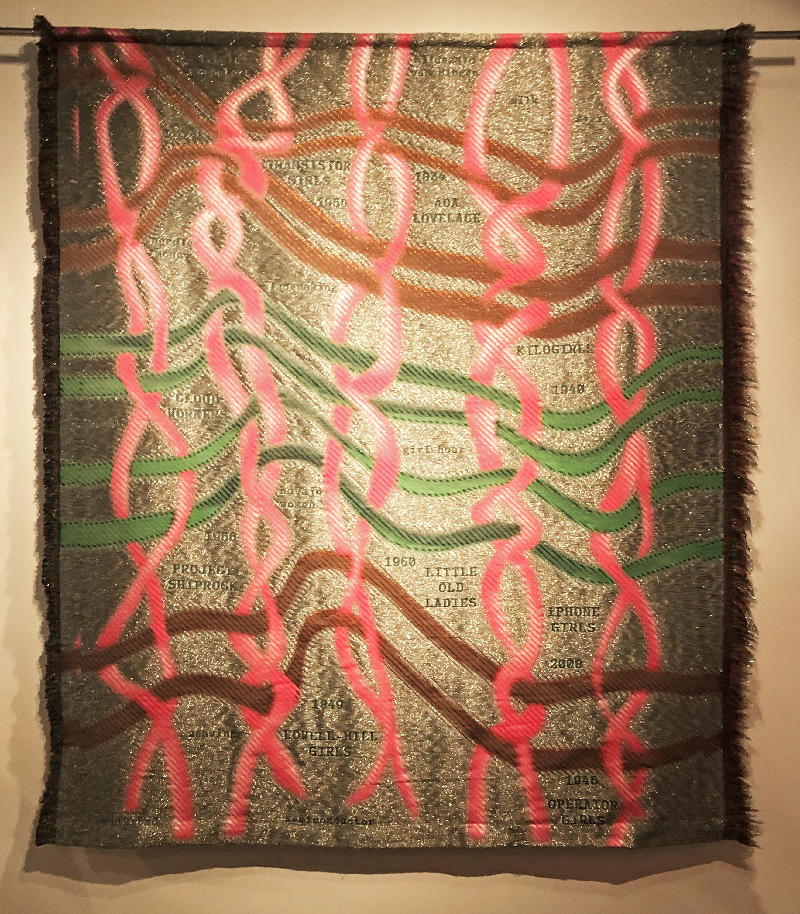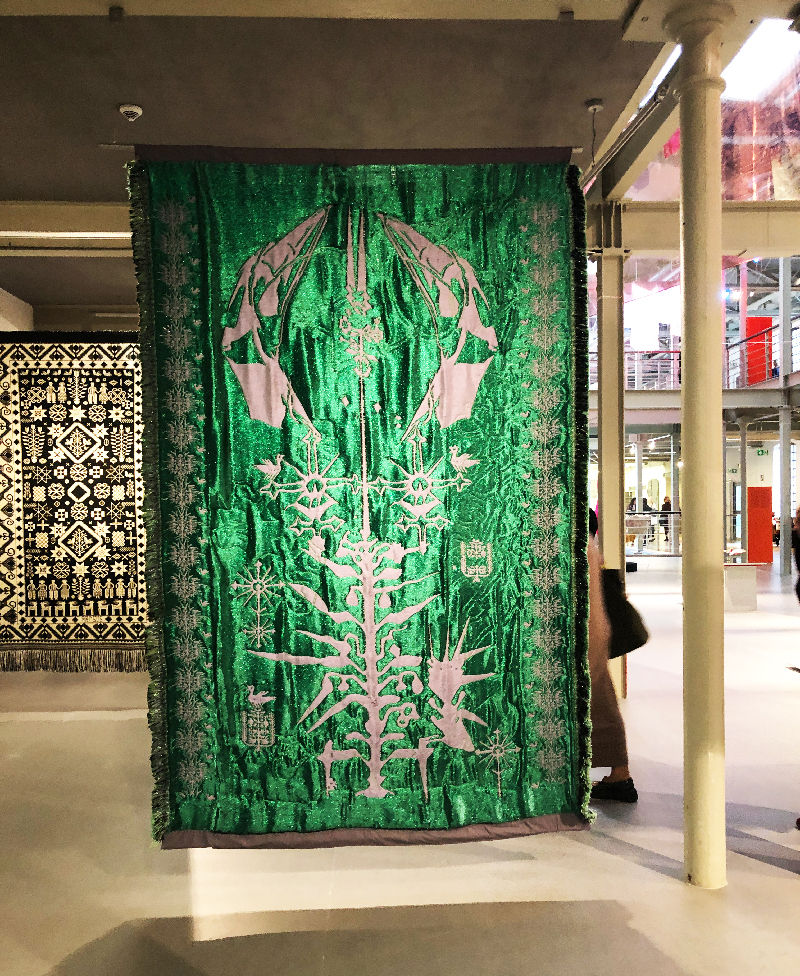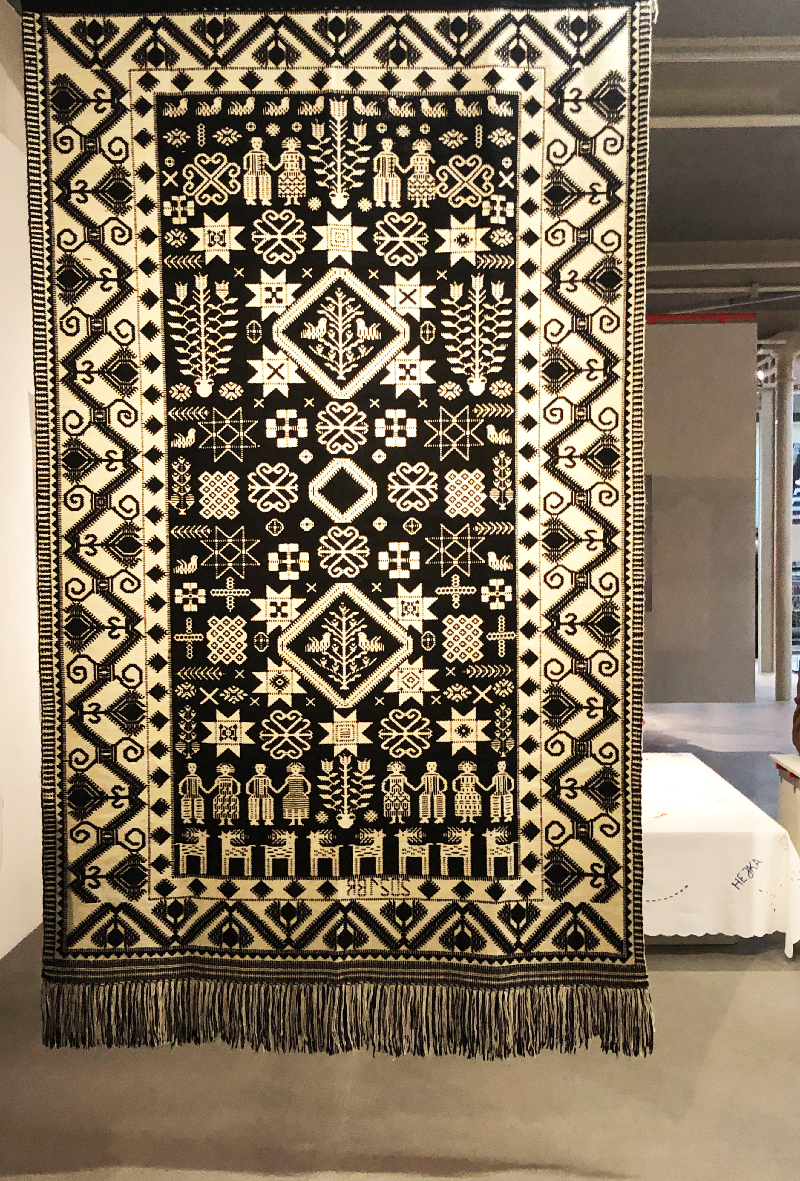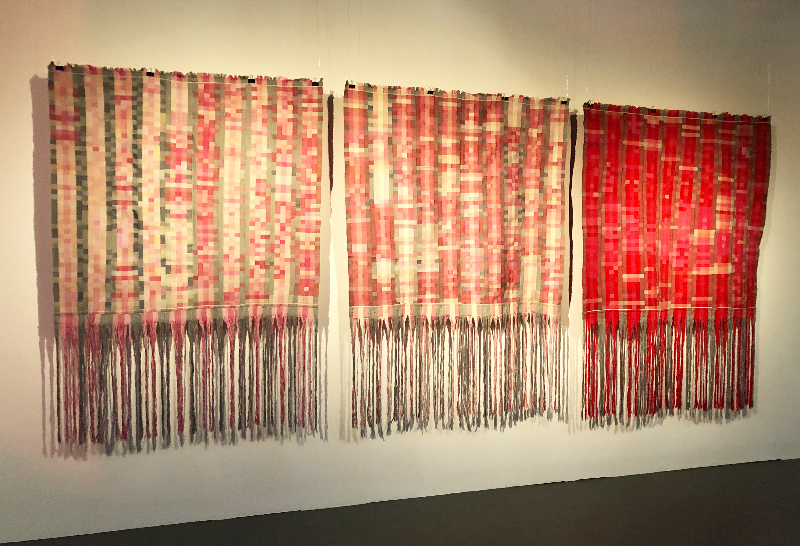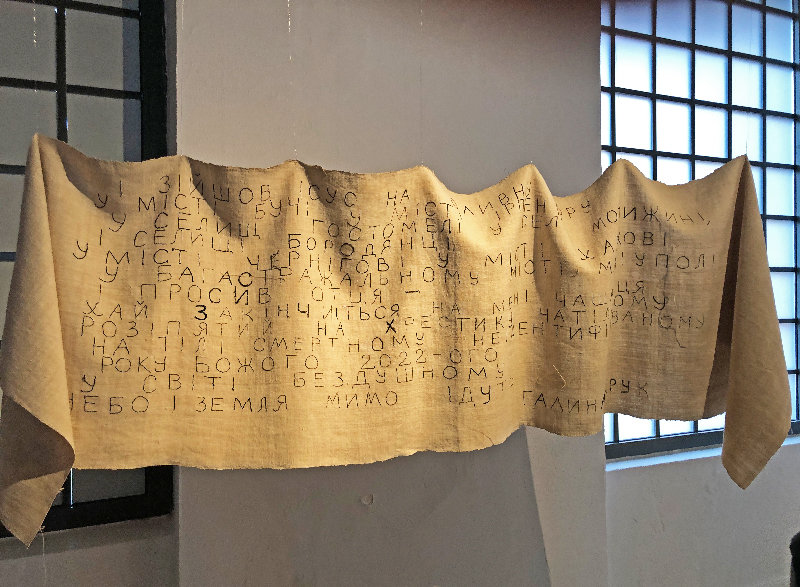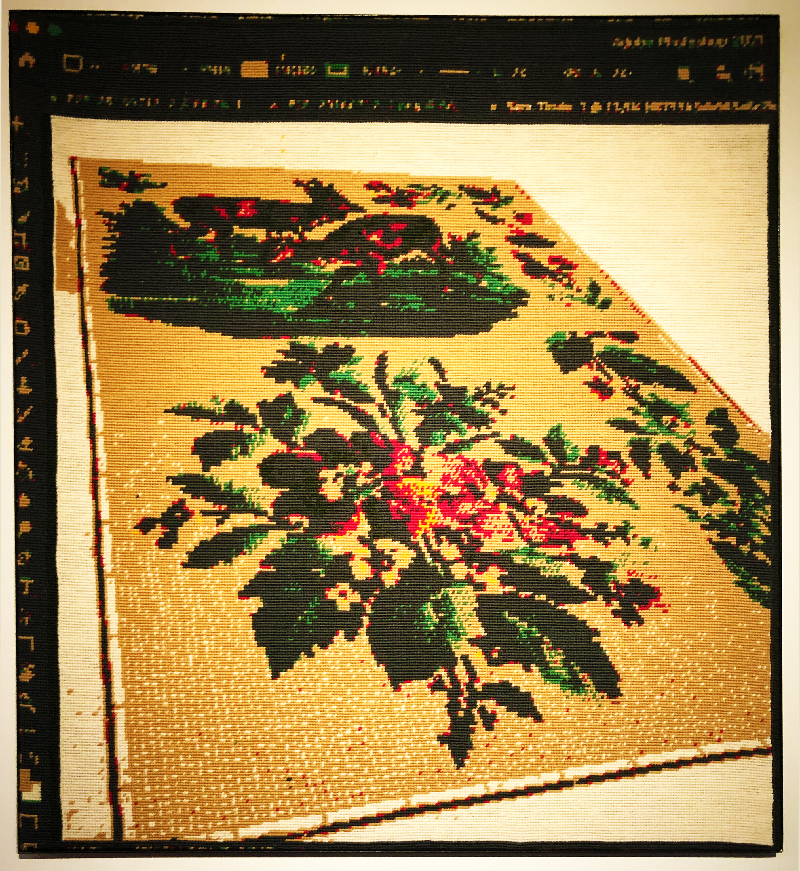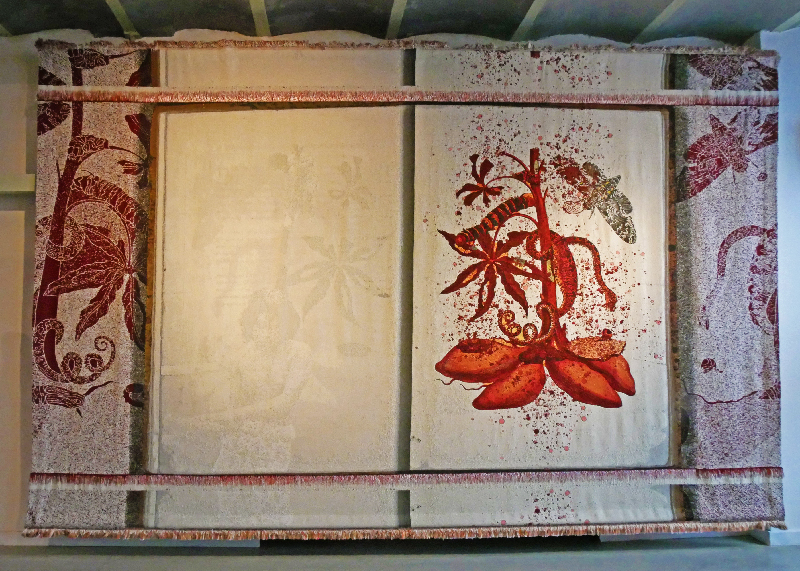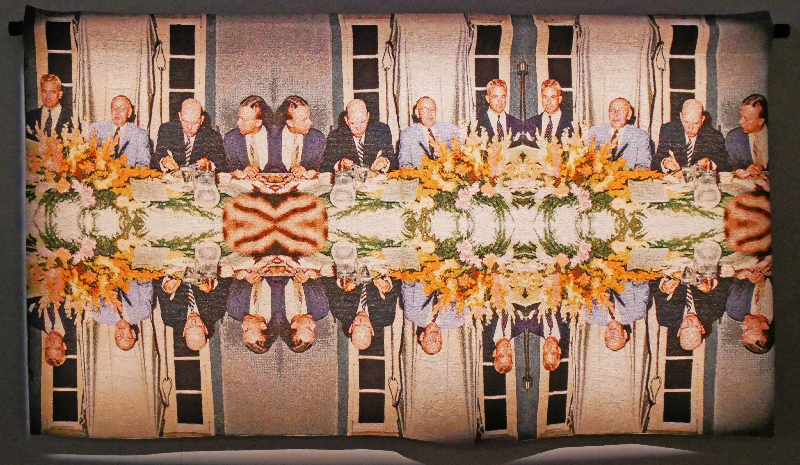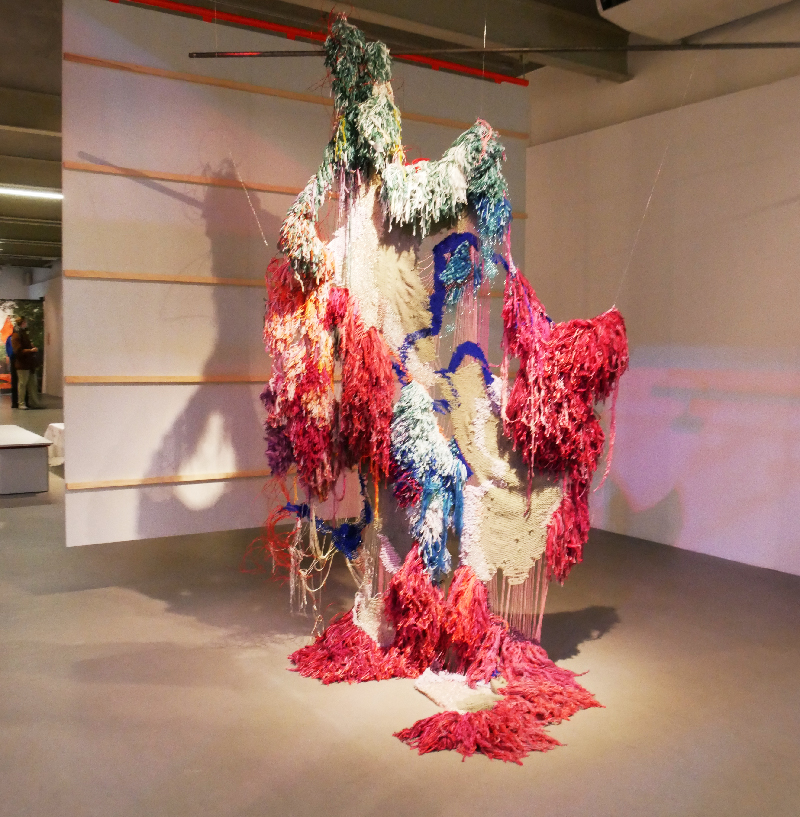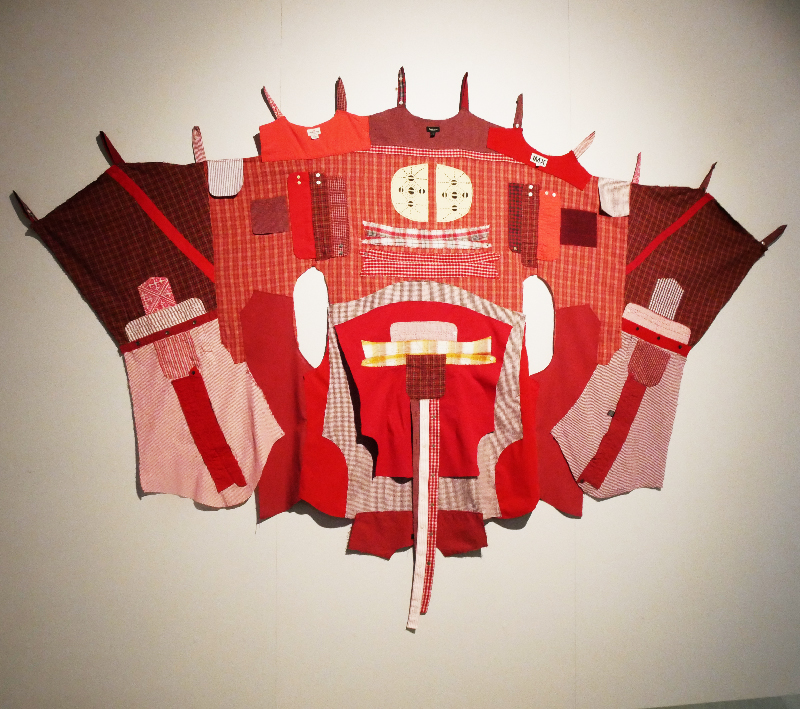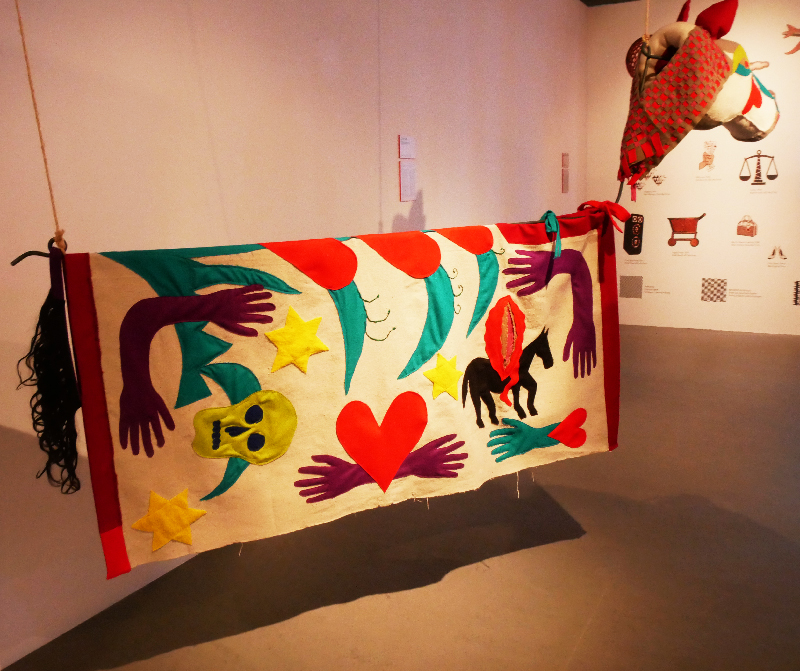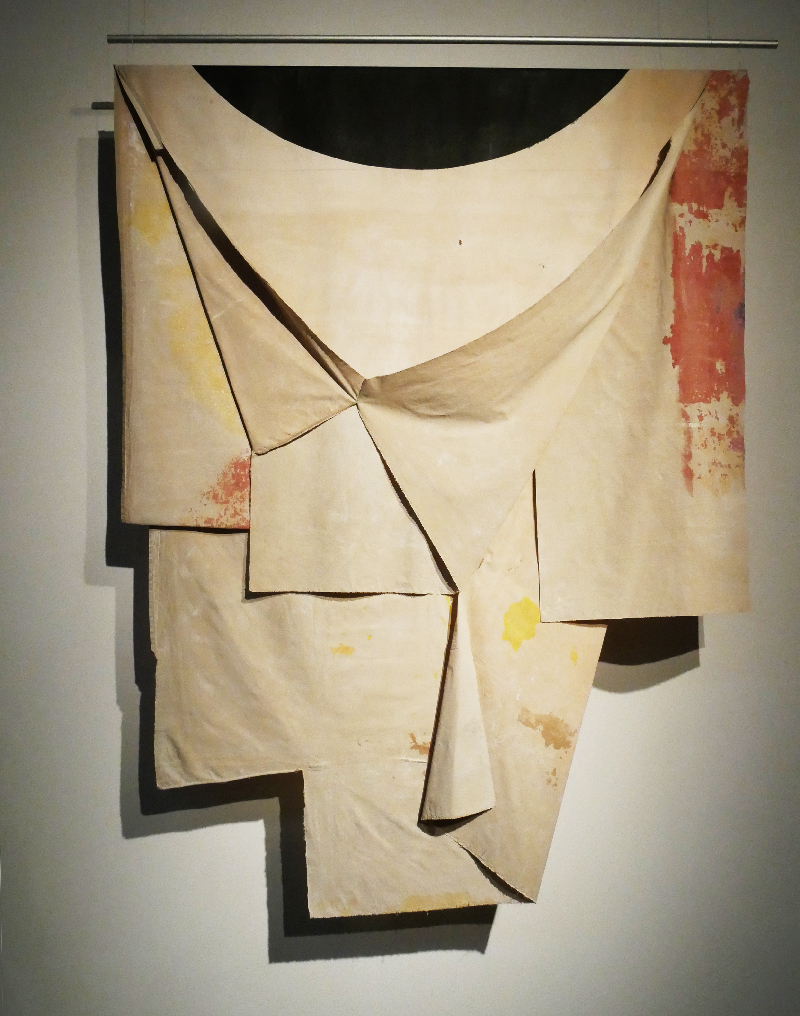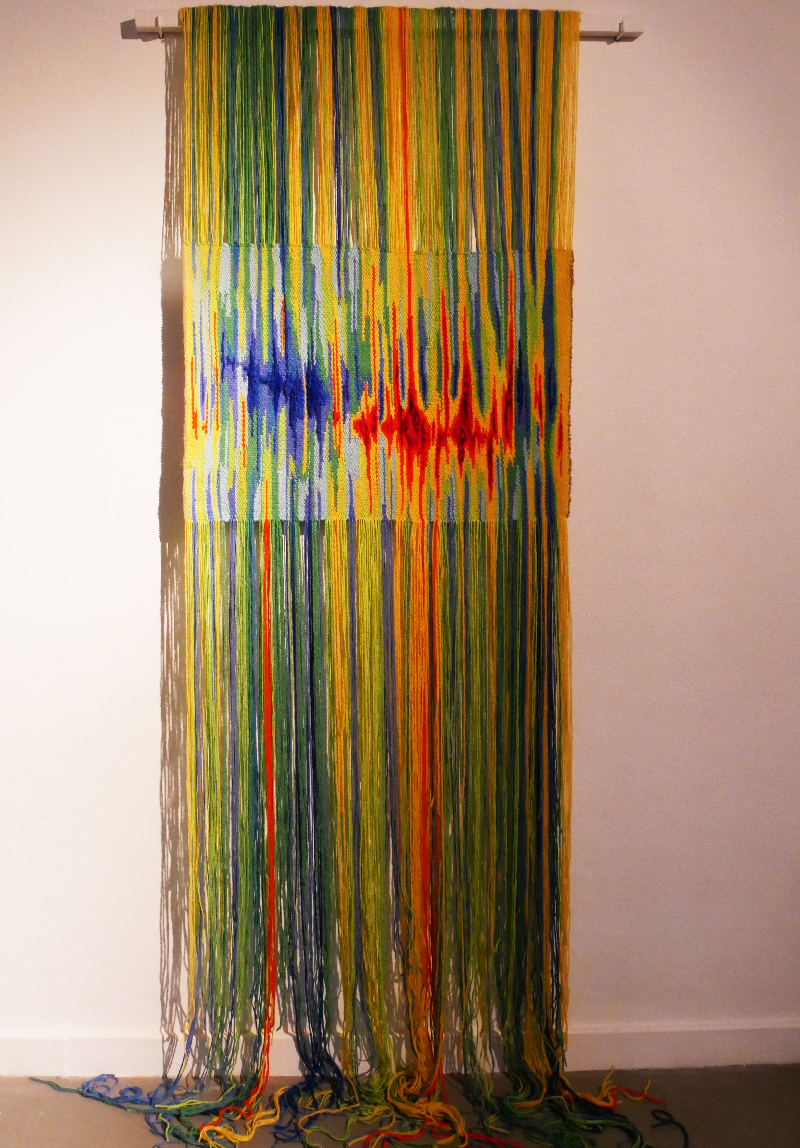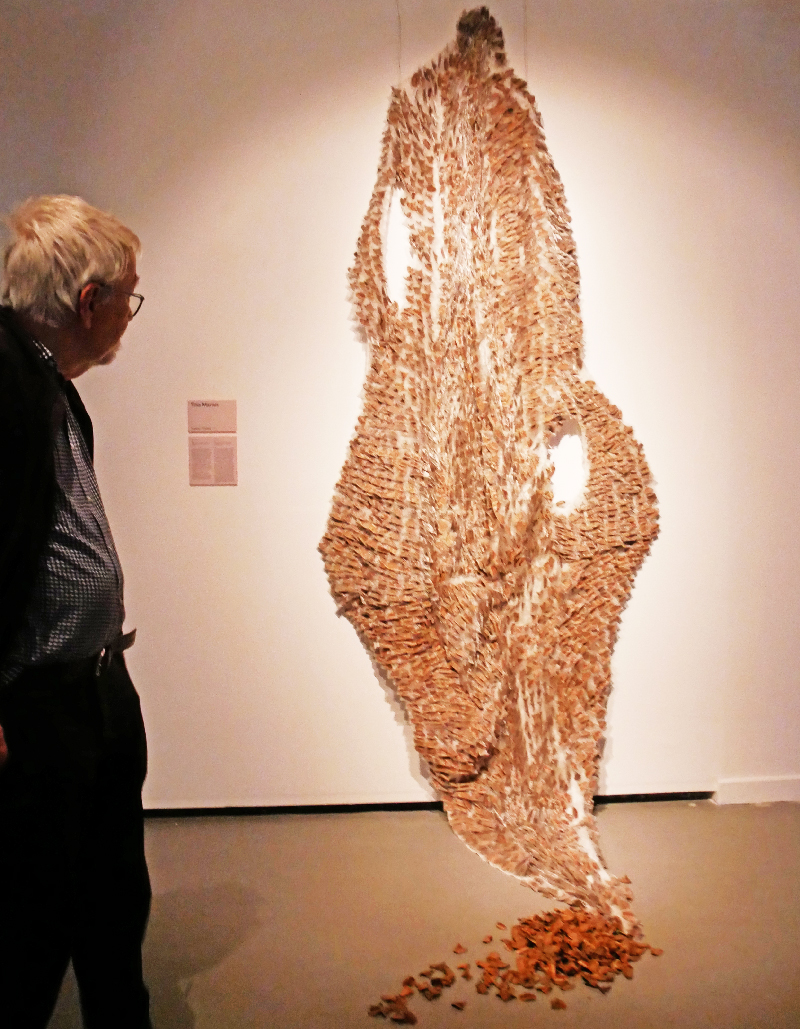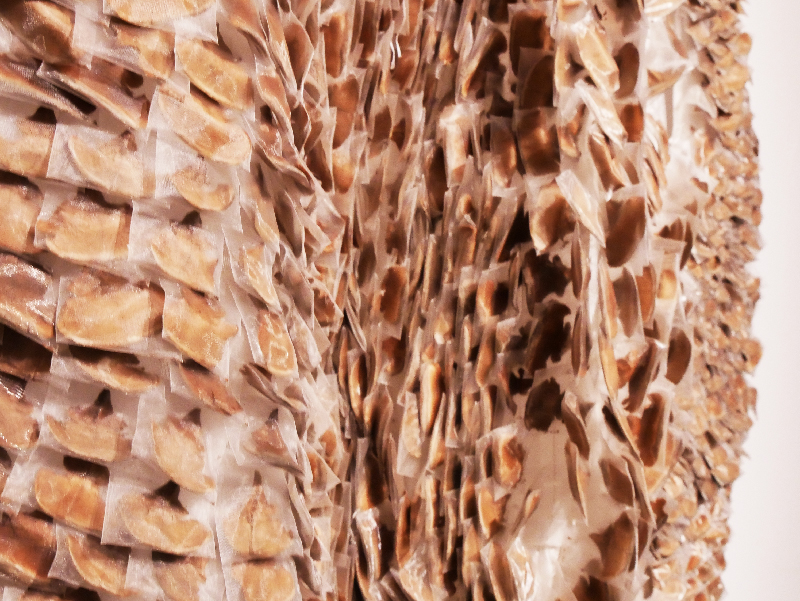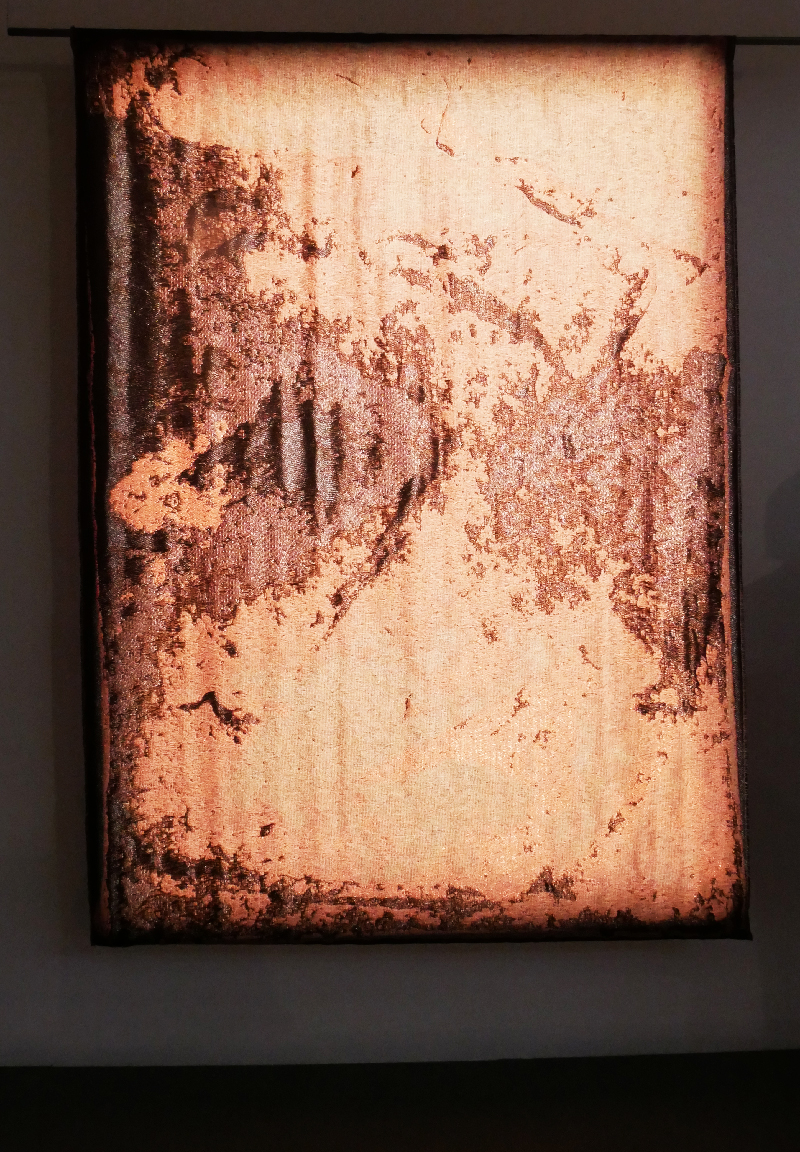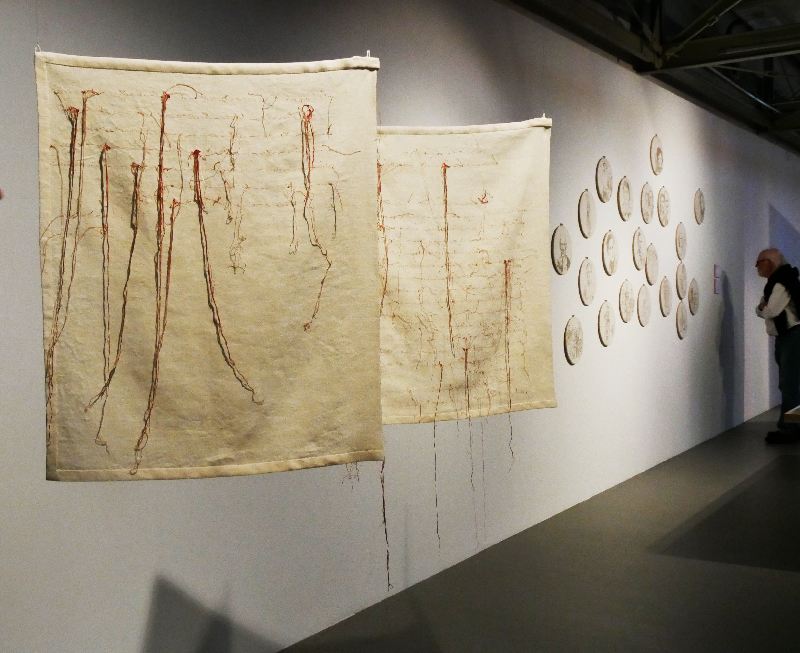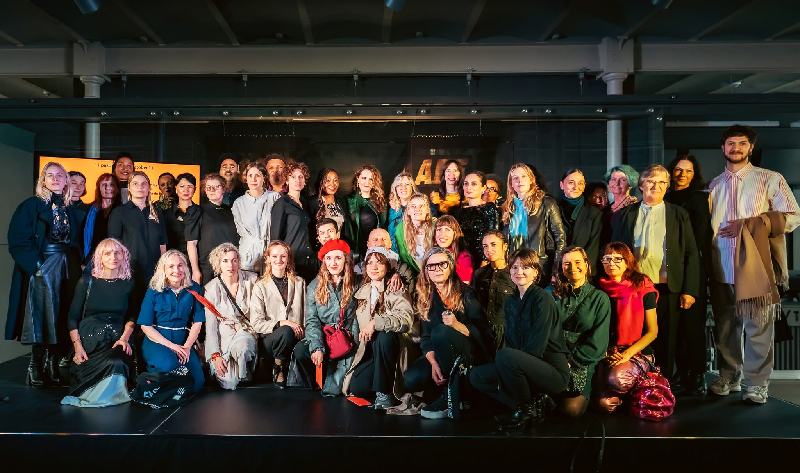
The End of the International Tapestry Triennial of Lodz?
18th International Textile Triennial – Deconstruction / Reconstruction, Central Museum of Textiles, Lodz, 11 October 2025 – 12 April 2026
Renamed the 18th International Textile Triennial of Lodz/Poland, this oldest and most prestigious international event was supposed to showcase contemporary textile art from around the world. Held every three years at the Central Museum of Textiles in Lodz, it used to feature innovative works by artists who explore the boundaries of textiles as an art form, combining traditional techniques with modern approaches. Until the 16th Triennial, local advisors in each country made the selection, a procedure that was not really open, but had produced a good global overview as to each country’s most recent developments in textile art.
There was an open call for the 16th Triennial. The overarching theme chosen for the show, “Breaching Borders”, was divided into seven sub-themes: Migration and Cultural Identity, Physical Identity and Sexuality, Origins, Memory, Psyche and Dialogues. They were all about crossing boundaries in these fields. The resulting selection did not quite meet the expectations of the audience. Some of the older visitors said they had “seen it all before”, meaning that there was a lack of exciting new work. My opinion on the need to revitalise textile art differed from that of the curator, Marta Kovalevska. I agree with her on the use of new technologies and a reassessment of craftsmanship, but I do not believe that changing the iconography in order to embrace more important topics is a good solution. This is what happened back in the late 1980s, when Gerhard Knodel (then a professor at Cranbrook) sat on the Lausanne jury. The statements written at the time were deemed highly important, in fact they often seemed to assume greater importance than the works themselves. Textile art was no longer supposed to relate only to textiles, but rather to embrace specific themes, preferably socially and politically relevant ones. At the time, this trend produced a kind of revival of the Lausanne Biennial, but it did not serve to extend the life of that Biennial.
The open call procedure was repeated for the 17th Triennial. That Triennial was themed, “Entangled State”, a visionary subject chosen before the outbreak of the pandemic and the war in Ukraine. For the exhibition, the theme was divided into four sub-themes: The Civilized (what kind of civilization are we creating); Represented States (e.g. childhood memories); Rootedness (e.g. our roots in the natural world) and The Horizons of Reality (the lines between reality and the virtual world). Somebody asked me on facebook if it still featured the best textile works as it did before, back in the old days when three advisors per country were responsible for the selection of artists. The pieces on view were maybe not the best in the old sense, but still very interesting items that provided food for thought. At the time, I was grateful to see that most works were real textile art pieces, not just fine art that happened to use textiles.
This year’s 18th Triennial saw a number of changes. Firstly, the name was altered to “International Textile Triennial”, but neither the Triennial Committee responsible for the event nor the curators or the jury gave any reason for this. Tapestry just vanished, and real textile art vanished with it, or so it seemed to me. I counted only 26 works that I would consider “textile art” (some of them rather poor textile art) among the 70 works chosen this time, and only 27 artists with a textile background (not important, but still indicative). The other art pieces may be excellent, of course, but they are simply not textile art.
There were further changes. This time two curators were involved, Marta Kovalevska and Bukola Oyebode-Westerhuis, and the theme they selected for this year’s edition is “Deconstruction / Reconstruction”. It is inspired by the challenges of our present times, which call for a reassessment of old systems and a reimagination of new pathways for a better future. The curators had asked the participating artists to send in a portfolio of a series of works, including descriptions, so that they could select the exhibits. This procedure made it a curatorial exhibition rather than an open call. If you give the potential participants a theme, then you can logically expect one work produced for the occasion. Asking for a portfolio to choose from suggests that the exhibition presented the views of the two curators.
The international jury had selected only the award-winning works. Since the jury was again biased towards fine art, the pieces it chose focused on the art narrative, and textiles seemed to play a minor role. In consequence, two of the award winners were not textile art, but simply art using textiles. The Gold Medal was presented to Aziza Qadyri (Uzbekistan) for “Her Stage (II)”, a soft sculpture installation relating how her grandmother sacrificed her dream of becoming a folk dancer (I did not see any special treatment of the textile elements, the important content was the narrative); the Silver Medal went to Lukasz Wojtanovski from Poland for “Corpus Christi Procession (green)”, which was a real textile art piece even if I have seen better work by him. Finally, the Bronze Medal was given to Charlott Marcus, a Swedish artist living in Amsterdam, for “Partition #8”, a mixed media audio installation made of curtains from a psychiatric hospital with a narrative related to the hospital patients. Here, the artist paid no attention at all to the curtains, the narrative was the key.
There were still further changes: former Triennials showcased the National Exhibition of Polish Tapestry. The previous edition was themed, “Material Fatigue” and displayed at the Central Museum of Textiles. The curator, Jakub Gavkovski, had wanted “to highlight the position of textile art within the broader Polish artistic landscape”. However, those who knew Polish textile art found it disappointing and would have liked to see better work.
This time, curator Bukola Oyebode-Westerhuis, who lives in the Netherlands, was asked to show African art made by women. “Rhizomatic Portals: Ways of Knowing” was meant to put the focus on the “Global South”. The Lodz Triennial, too, included more African countries than ever before (Uganda, Ghana, Nigeria, Ethiopia, Senegal, South Africa) as well as countries that had probably never participated in the Triennial (Yemen, Bosnia, Kazakhstan, Uzbekistan, Haiti, Sri Lanka, Mongolia, Taiwan), although many of these artists live in London, Paris or Amsterdam. The majority of the participants came from Poland (15), the Netherlands (12), France and the USA (7) Germany (5), Ukraine (3), and Belgium, the UK, Greece and Austria (2 each).
As usual, this year’s Triennial included a number of side shows such as perfomances, a very interesting lecture by Ibrahim Mahama (who rightly said that he should not be seen as a textile artist), and the Young Textile Art Triennale, YTAT organized by the Streminszki Academy of Fine Art at the City Art Gallery in Lodz. Other exhibitions of textile art were not mentioned as accompanying events, for instance a show featuring Jonatan E. Jurkovski at the Book Art Museum, even though it presents real textile art in a magical place. Further information on those textile events in Lodz will be published at a later date.
My conclusion is that this once very famous textile gathering in Lodz has now turned into an ordinary fine art event like so many others in every European country. As regards textile art, we can expect more from shows like Contextile in Portugal or the Riga Triennial in Latvia. These exhibitions still have a truly open call and a jury knowledgable in textiles.
Beatrijs Sterk
P.S. I will collect reactions and send them on to the Central museum of Textiles , or you can write to the museum yourself : sekretariat@cmwl.pl my email is bsterk@gmx.net
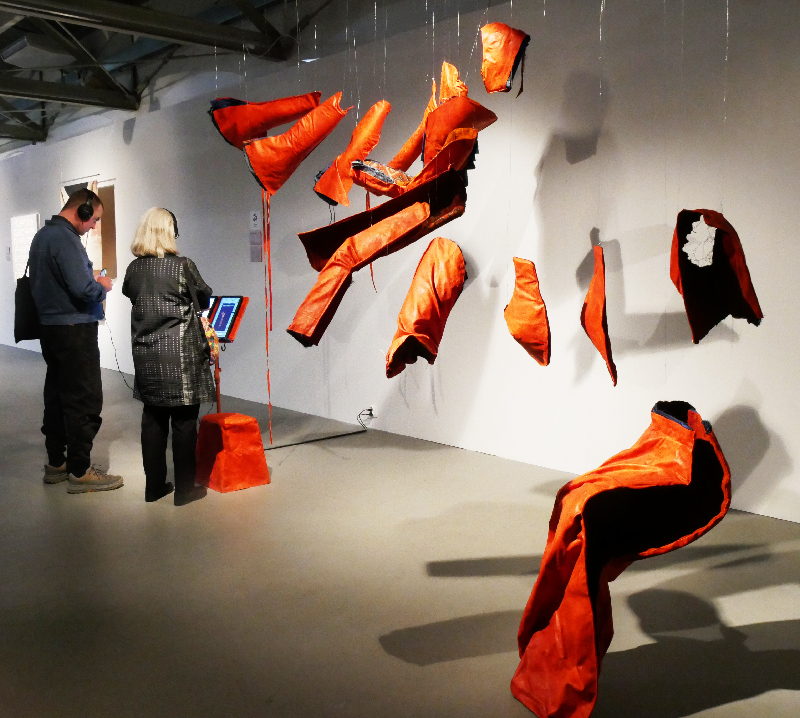
Aziza Kadyri/Uzbekistan: “Her Stage II, 2024, Gold medal; soft sculpture, faux leather, velvet, cotton, steel, foam, plastic; Photo Beatrijs Sterk
